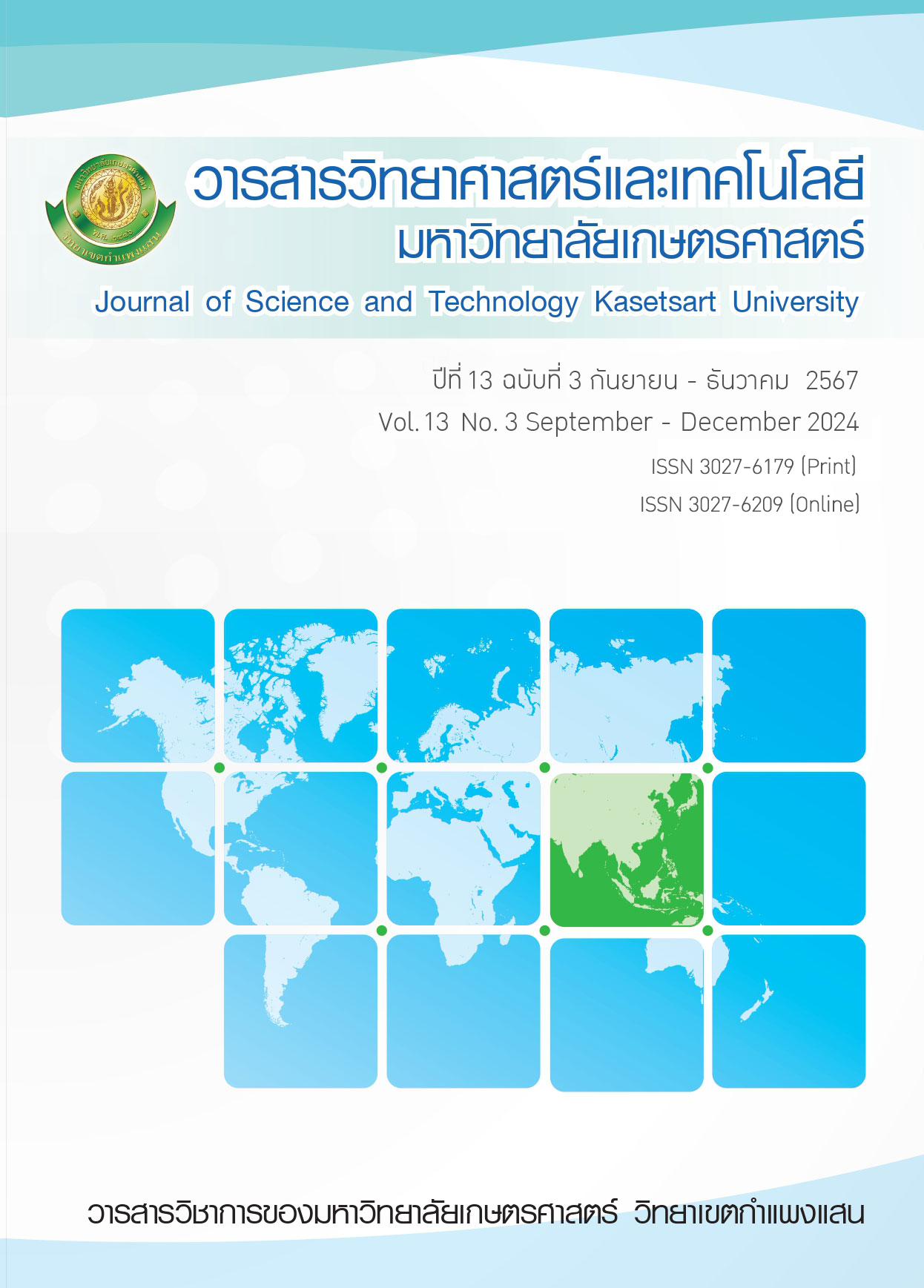Integrating Horizons: A Holistic View of Predictive Maintenance in Aviation Maintenance Practices
Main Article Content
Abstract
This comprehensive literature review explores the integration of predictive maintenance (PdM) within the aviation industry, emphasizing the transformative role of advanced technologies such as artificial intelligence, the Internet of Things, and digital twins. By analyzing peer-reviewed research from the past decade, the review highlights the significant benefits of PdM, including enhanced operational efficiency, improved safety, and substantial economic advantages through optimized maintenance schedules and reduced aircraft downtime. Key findings reveal the adoption of innovative hybrid machine learning approaches, such as integrating natural language processing with ensemble learning. Technological advancements enable accurate failure predictions and proactive maintenance interventions, extending component lifespans and preventing unscheduled downtimes. The economic impact of PdM is profound, promising significant cost savings by reducing unscheduled maintenance and optimizing spare parts inventory management. However, there is a noted need for comprehensive cost-benefit analyses to fully quantify these economic impacts across all aircraft components. The review also identifies substantial challenges in PdM implementation, such as high initial investment costs, regulatory complexities, and the necessity for workforce re-skilling. Policy recommendations include updating regulatory frameworks to support PdM technology integration and fostering a culture of continual improvement and innovation within organizations. The paper underscores the importance of strategic organizational strategies, including staff training in PdM technologies and data analytics, to overcome these barriers. In conclusion, the review emphasizes the undeniable potential of PdM to revolutionize aviation maintenance by creating a streamlined, data-driven maintenance regime. It calls for a coherent implementation strategy, standardized data practices, and organizational support to harness the full benefits of PdM. Future research directions include deeper cost-benefit analyses, strategies for managing resistance to change, and developing standardized methodologies for economic performance evaluation, guiding both academia and industry towards advanced PdM practices.
Article Details
References
Altay, A., Ozkan, O., and Kayakutlu, G. (2014). Prediction of aircraft failure times using artificial neural networks and genetic algorithms. Journal of aircraft, 51, 47-53. doi:10.2514/1.C031793.
Avcı, A., and Acır, N. (2020). Remaining useful life estimation with parallel convolutional neural networks on predictive maintenance applications. 2020 28th Signal processing and communications applications conference (SIU), (pp. 1-4). doi:10.1109/SIU49456.2020.9302284.
Azyus, A., Wijaya, S., and Naved, M. (2022). Determining RUL predictive maintenance on aircraft engines using GRU. Journal of mechanical, civil and industrial engineering, 3(3), 79-84. doi:10.32996/jmcie.2022.3.3.10.
Basora, L., Bry, P., Olive, X., & Freeman, F. (2021). Aircraft fleet health monitoring with anomaly detection techniques. Aerospace, 8, 103. doi: 10.3390/AEROSPACE8040103.
Boeing. (2019, December 16). Boeing statement regarding 737 MAX production. Boeing Media Room. Retrieved February 12, 2024, from https://boeing.mediaroom.com.
Dalzochio, J., Kunst, R., Barbosa, J., Neto, P., Pignaton, E., Caten, C., & Penha, A. (2023). Predictive maintenance in the military domain: a systematic review of the literature. ACM computing surveys, 55(13s), 1-30. doi: 10.1145/3586100.
Dangut, M. D., Skaf, Z., and Jennions, I. (2020). An integrated machine learning model for aircraft components rare failure prognostics. ISA transactions, 113, 102, 213-224. doi:10.1016/j.isatra.2020.05.001.
Fedorov, R., and Pavlyuk, D. (2020). Economic Efficiency of Data-Driven Fault Diagnosis and Prognosis Techniques in Maintenance and Repair Organizations. In: Kabashkin, I., Yatskiv, I., Prentkovskis, O. (Eds.), Reliability and Statistics in Transportation and Communication. pp. 31-43. doi: 10.1007/978-3-030-44610-9_4.
Gerede, E. (2015). A study of challenges to the success of the safety management system in aircraft maintenance organizations in Turkey. Safety science, 73, 106-116. doi:10.1016/J.SSCI.2014.11.013.
Gu, J., Zhang, G., & Li, K. (2015). Efficient aircraft spare parts inventory management under demand uncertainty. Journal of air transport management, 42, 101-109. doi:10.1016/J.JAIRTRAMAN.2014.09.006.
Hesser, D. F., and Markert, B. (2019). Tool wear monitoring of a retrofitted CNC milling machine using artificial neural networks. Manufacturing letters, 21, 34-38. doi:10.1016/j.mfglet.2019.02.004.
Hribernik, K., Stietencron, M., Bousdekis, A., Bredehorst, B., Mentzas, G., and Thoben, K. (2018). Towards a Unified Predictive Maintenance System - A use case in production logistics in aeronautics. Procedia manufacturing, 16, 131-138. doi:10.1016/J.PROMFG.2018.10.168.
Khan, K., Sohaib, M., Rashid, A., Ali, S., Akbar, H., Basit, A., and Ahmad, T. (2021). Recent trends and challenges in predictive maintenance of aircraft’s engine and hydraulic system. Journal of the Brazilian. Society of mechanical sciences and engineering, 43. doi:10.1007/s40430-021-03121-2.
McDonald, N., Corrigan, S., Daly, C., and Cromie, S. (2000). Safety management systems and safety culture in aircraft maintenance organisations. Safety science, 34, 151-176. doi:10.1016/S0925-7535(00)00011-4.
Rath, N., Mishra, R., and Kushari, A. (2022). Aero engine health monitoring, diagnostics and prognostics for condition-based maintenance: an overview. International journal of turbo & jet-engines, 39(1), 77-89. doi:10.1515/tjeng-2022-0020.
Rodrigues, L., Gomes, J., Bizarria, C., Galvão, R., and Yoneyama, T. (2010). Using prognostic system and decision analysis techniques in aircraft maintenance cost-benefit models. 2010 IEEE aerospace conference, (pp.1-7). doi:10.1109/AERO.2010.5446839.
Scott, M., Verhagen, W., Bieber, M., and Marzocca, P. (2022). A systematic literature review of predictive maintenance for defence fixed-wing aircraft sustainment and operations. Sensors, 22(18). 7070. doi:10.3390/s22187070.
Selçuk,S. (2017). Predictive maintenance, its implementation and latest trends. Proceedings of the Institution of Mechanical Engineers, part B: Journal of Engineering Manufacture, 231(9),1670-1679. doi:10.1177/09544054156016.
Shen, L. (2021). Data analysis for the Hogg and Max Weber models. 2021 International Conference on Applications and Techniques in Cyber Intelligence. (pp. 982-985). doi:10.1007/978-3-030-79200-8_145.
Stanton, I., Munir, K., Ikram, A., and El-Bakry, M. (2022). Predictive maintenance analytics and implementation for aircraft: challenges and opportunities. Systems Engineering, 26, 216 - 237. doi:10.1002/sys.21651.
Washington, A., Clothier, R., and Williams, B. (2017). A Bayesian approach to system safety assessment and compliance assessment for Unmanned Aircraft Systems. Journal of Air Transport Management, 62, 18-33. doi:10.1016/J.JAIRTRAMAN.2017.02.003.
Wilson, J., Mrusek, B., Reimann, M., Witcher, K., and Solti, J. (2022). Predictive Data Analytics in Aviation Maintenance: A Cultural Perspective. AHFE (2022) International Conference. USA: AHFE International. doi:10.54941/ahfe100988.
Yan, H., Zuo, H., Tang, J., Wang, R., and Ma, X. (2020). Predictive maintenance framework of the aircraft system based on PHM information. 2020 Asia-pacific international symposium on advanced reliability and maintenance modeling (APARM), (pp.1-6). doi:10.1109/APARM49247.2020.9209454.
Yang, H., LaBella, A., and Desell, T. (2021). Predictive maintenance for general aviation using convolutional transformers. Proceedings of the AAAI Conference on Artificial Intelligence, 36(11), 12636-12642. doi:10.1609/aaai.v36i11.21538.


